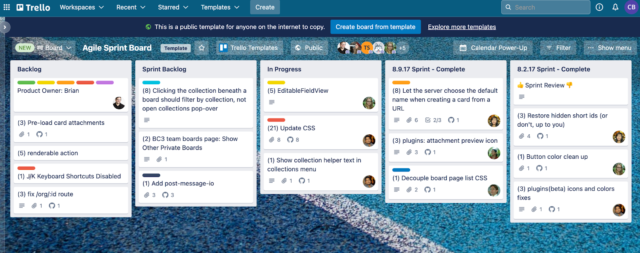Table of Content
1.Top 15 Tips to Navigate the Challenges of Remote Work in Accounting Firms
-
- 1.1 Establishing Clear Communication Channels
- 1.2 Setting Clear Expectations
- 1.3 Promoting Work-Life Balance
- 1.4 Providing Adequate Training
- 1.5 Using Cloud-Based Accounting Software
- 1.6 Regular Check-Ins
- 1.7 Ensuring Data Accuracy
- 1.8 Maintaining Transparency
- 1.9 Adapting to Different Time Zones
- 1.10 Encouraging Professional Development
- 1.12 Using Project Management Tools
- 1.13 Creating a Virtual Office Environment
- 1.13 Implementing Performance Metrics
- 1.14 Encouraging Social Interaction
- 1.15 Providing Feedback Regularly
Top 15 Tips to Navigate the Challenges of Remote Work in Accounting Firms
The accounting profession has undergone a significant transformation in recent years, with remote work becoming increasingly prevalent. While remote work offers numerous benefits, such as increased flexibility and reduced overhead costs, it also presents unique challenges that must be addressed to ensure success. This blog post will explore some of the key challenges faced by CPA firms in managing remote work and provide practical tips for overcoming them.
1. Establishing Clear Communication Channels

One of the most critical aspects of remote work is maintaining effective communication. The absence of face-to-face interactions can make it difficult to convey messages clearly and ensure that everyone is on the same page. Therefore, it’s essential to establish clear communication channels and use tools like Slack, Teams, or Zoom to facilitate regular interaction.
2. Setting Clear Expectations
When transitioning to a remote work model, it’s crucial to set clear expectations regarding roles, responsibilities, and deadlines. This helps to avoid misunderstandings and ensures that everyone is working towards the same goals. Consider creating a detailed remote work policy that outlines the firm’s expectations and guidelines.
3. Promoting Work-Life Balance
One of the benefits of remote work is the potential for a better work-life balance. However, it’s important to ensure that employees are not working excessive hours or neglecting their personal lives. Encourage regular breaks, set boundaries between work and personal time, and promote a healthy work-life balance.
4. Providing Adequate Training

To ensure that employees are equipped to succeed in a remote work environment, it’s essential to provide adequate training on remote work tools and best practices. This includes training on communication tools, project management software, and cybersecurity measures.
5. Using Cloud-Based Accounting Software
Cloud-based accounting software is a valuable tool for remote work as it allows employees to access necessary files and data from anywhere. This eliminates the need for physical office space and facilitates collaboration among team members.
6. Regular Check-Ins
To maintain strong relationships and ensure that everyone is on track, schedule regular one-on-one and team meetings. These check-ins provide an opportunity to discuss progress, address any issues, and maintain a sense of connection.
7. Ensuring Data Accuracy
Remote work can introduce new risks to data accuracy, as employees may be working independently and without the same level of oversight as in a traditional office setting. Implement checks and balances to ensure data integrity, such as regular reviews and cross-checking of work.
8. Maintaining Transparency
It’s important to keep everyone informed about company updates and changes to maintain trust and transparency. Use regular communication channels to share information and address any concerns.
9. Adapting to Different Time Zones
If your team members are located in different time zones, be flexible with meeting times to accommodate everyone. Consider using tools like Doodle to schedule meetings that work for everyone’s schedules.
10. Encouraging Professional Development
Remote work doesn’t have to limit professional development opportunities. Provide employees with access to online courses, webinars, and conferences to help them stay up-to-date on industry trends and improve their skills.
11. Using Project Management Tools

Project management tools like Asana,Trello, and Zoho Projects can help keep projects on track and ensure that everyone is aware of their responsibilities. These tools can also facilitate collaboration and communication among team members.
12. Creating a Virtual Office Environment
While remote work eliminates the need for a physical office, it’s still important to create a sense of community and belonging. Consider using virtual office tools to simulate an office setting, such as virtual water coolers or team-building activities.
13. Implementing Performance Metrics
Use key performance indicators (KPIs) to measure productivity and performance in a remote work environment. This can help to identify areas for improvement and ensure that employees are meeting expectations.
14. Encouraging Social Interaction
While remote work can make it difficult to socialize with colleagues, it’s important to encourage social interaction to build team camaraderie and morale. Organize virtual social events, such as happy hours or team-building activities.
15. Providing Feedback Regularly
Give constructive feedback to employees regularly to help them improve their performance and address any issues. This can also help to maintain a positive and supportive work environment.
By addressing these challenges and implementing effective strategies, CPA firms can successfully navigate the transition to remote work and reap the benefits of this flexible work arrangement.









